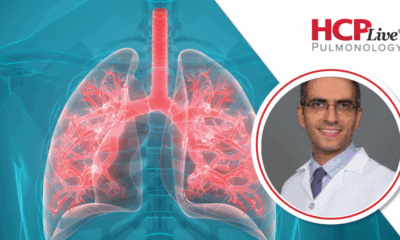Health
Researchers Uncover Genetic Factors Influencing Pediatric Bone Density

Researchers at the Children’s Hospital of Philadelphia (CHOP) have identified significant genetic factors that influence bone density in children and adolescents. This groundbreaking research aims to aid in the early identification of pediatric patients who might benefit from interventions to enhance their bone health, which could help prevent fractures later in life.
Understanding why some children have weaker bones is crucial, particularly since many experience fractures due to accidents and recover quickly. Factors such as chronic health conditions, dietary restrictions, and steroid use can affect bone mineral metabolism. Although most studies have focused on adults, the genetic influences on bone density in children have not been thoroughly explored until now.
Two recent studies conducted by CHOP researchers delve into the genetic and genomic information impacting bone development in children. The first study, published in March 2025 in the journal Genome Biology, examined genetic signals linked to bone mineral density identified through previous genome-wide association studies (GWAS) involving both adults and children. Prior research had failed to pinpoint a causal gene associated with these signals.
The researchers focused on the relationship between osteoblasts, which generate new bone tissue, and osteoclasts, which break down old bone tissue. During childhood, osteoblasts are particularly active to facilitate proper bone growth. Utilizing a technique called CRISPR interference (CRISPRi), which silences gene expression without altering DNA, they identified four key genes: ARID5B, CC2D1B, EIF4G2, and NCOA3. These genes play a role in osteoblast maturation and indicate that genetic signals related to bone density may also reflect other health issues.
“Our hope is to further study these signals specifically in pediatrics and help identify which children are more likely to get a fracture to optimize their bone health for life,” stated Struan F.A. Grant, Ph.D., Director of the Center for Spatial and Functional Genomics at CHOP.
The second study, published in the Journal of Bone and Mineral Research, utilized a polygenic risk score known as genetic quantitative ultrasound speed of sound (gSOS). Previously applied in adult studies to assess fracture risk, researchers sought to determine its relevance to children’s bone health. They analyzed data from two observational studies, including the Bone Mineral Density in Childhood Study and data spanning over two decades from CHOP’s Center for Applied Genomics.
The findings revealed that a higher gSOS score correlates with increased bone mineral density at various skeletal sites and a reduced likelihood of fractures across both studies. Notably, this analysis considered numerous factors such as sex, puberty stage, calcium intake, height, weight, BMI, and accident history.
“Our study found that genetics represent a powerful component of bone density across the entire lifespan,” remarked Babette S. Zemel, Ph.D., Professor of Pediatrics at CHOP. “We were surprised to see that the polygenic risk score could accurately predict which patients were more likely to experience a fracture, even accounting for normal childhood activities.”
Both studies suggest that these methods could enhance strategies for improving bone health early in life. While a balanced diet and regular participation in weight-bearing activities, such as volleyball and basketball, are essential for bone health, the research indicates these practices remain beneficial, even for those at higher genetic risk for fractures.
-

 Technology5 months ago
Technology5 months agoDiscover the Top 10 Calorie Counting Apps of 2025
-

 Technology2 weeks ago
Technology2 weeks agoOpenAI to Implement Age Verification for ChatGPT by December 2025
-

 Health3 months ago
Health3 months agoBella Hadid Shares Health Update After Treatment for Lyme Disease
-

 Health3 months ago
Health3 months agoAnalysts Project Stronger Growth for Apple’s iPhone 17 Lineup
-

 Health3 months ago
Health3 months agoErin Bates Shares Recovery Update Following Sepsis Complications
-

 Technology5 months ago
Technology5 months agoDiscover How to Reverse Image Search Using ChatGPT Effortlessly
-

 Technology3 months ago
Technology3 months agoElectric Moto Influencer Surronster Arrested in Tijuana
-

 Technology2 months ago
Technology2 months agoDiscover 2025’s Top GPUs for Exceptional 4K Gaming Performance
-

 Technology5 months ago
Technology5 months agoMeta Initiates $60B AI Data Center Expansion, Starting in Ohio
-

 Technology5 months ago
Technology5 months agoRecovering a Suspended TikTok Account: A Step-by-Step Guide
-

 Health5 months ago
Health5 months agoTested: Rab Firewall Mountain Jacket Survives Harsh Conditions
-

 Lifestyle5 months ago
Lifestyle5 months agoBelton Family Reunites After Daughter Survives Hill Country Floods





















